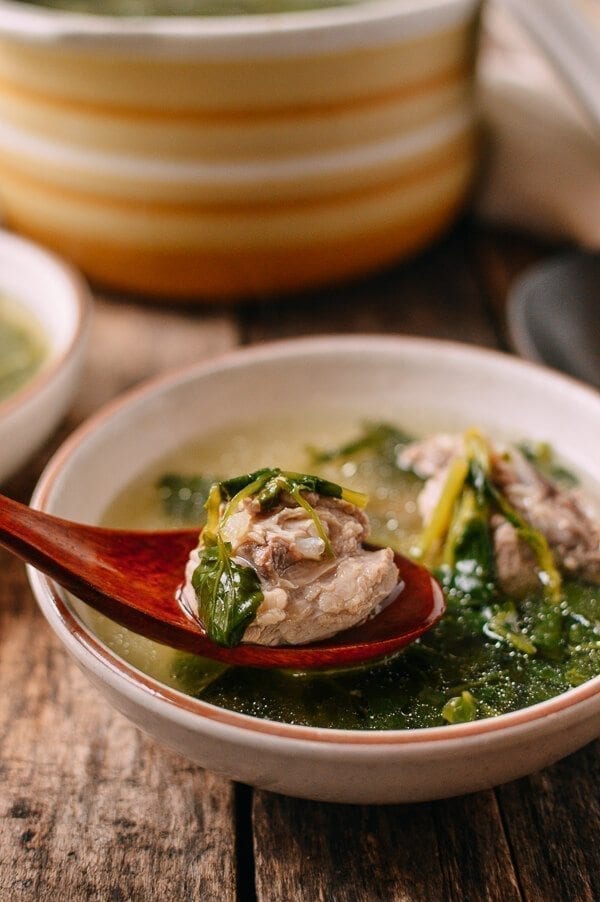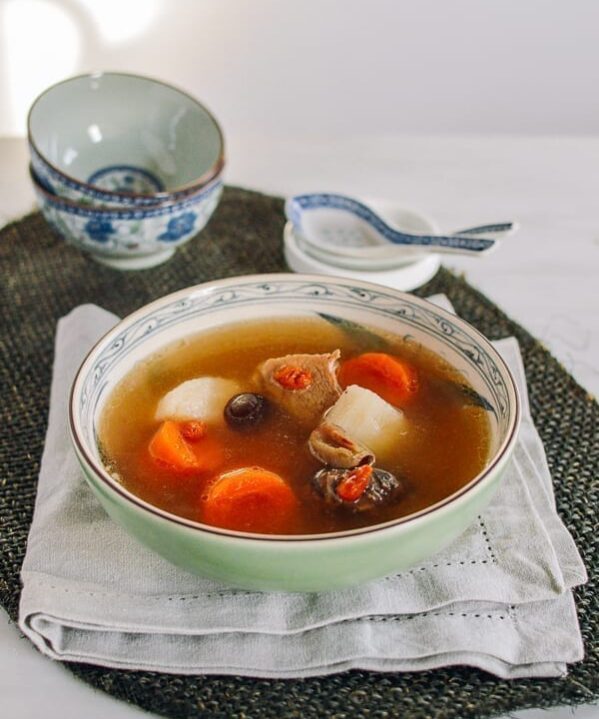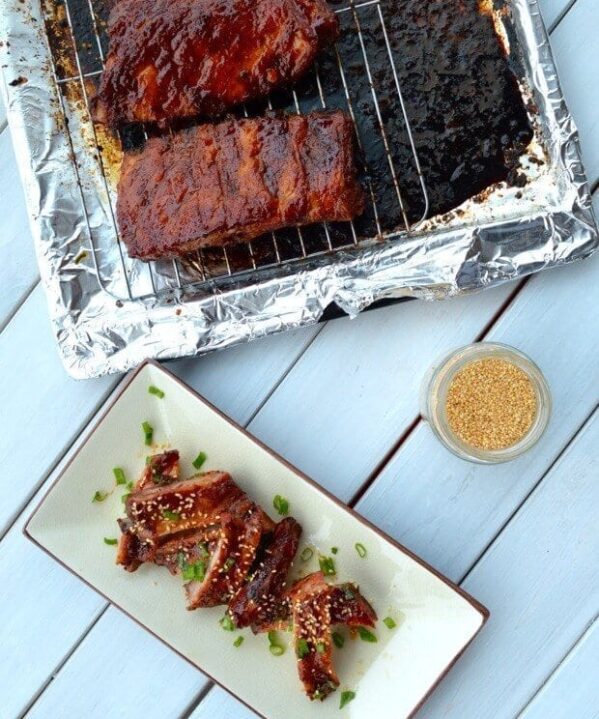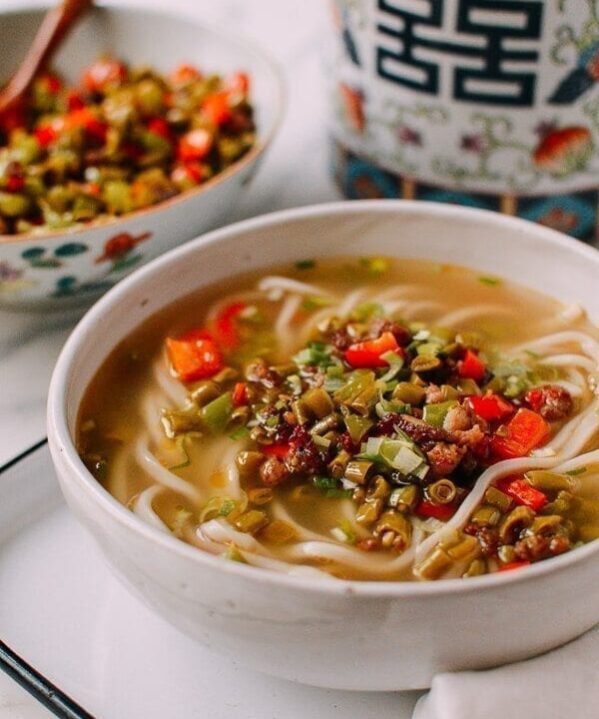Chinese Watercress Soup with Pork Ribs was a staple at our house growing up. For me, picking wild watercress with my mom was my first memory of enjoying sai yeung choy tong (this is the Cantonese transliteration––it’s xī yáng cài tang 西洋菜汤 in Mandarin).
Picking Watercress in the Boonies
When I was a kid, we lived in a small upstate New York town where Asian markets and fresh watercress were nowhere to be found.
It was even tricky to find watercress in New York City’s Chinatown (where we reliably stocked up on vital pantry items and produce essentials periodically), which was already a two-hour drive away to begin with.
One summer Sunday, while taking a family drive, we made a roadside stop where there was a large steel pipe with a generous flow of clear, cold water flowing into a large steel tub. The tub was old, and excess water flowed out of it into a nearby brook.
It sounds like a health hazard today, but it was a welcome sight on that hot day, and the cold mountain spring water was still the best water I have ever tasted!
As we enjoyed our water, my mom scouted the neighboring area where the stream flowed and widened. Suddenly, she exclaimed, “wahh, sai yeung choy!” Is that wild watercress growing there? After a quick taste, she concluded it was, and went to work harvesting a few bunches. Needless to say, we harvested watercress from that same secret spot many times after!
Discovering Wild Watercress in Surprising Places!
During our travels over the years, we also discovered wild watercress along a trout stream in Sedona, AZ, as well as by the streams of the North Rim of the Grand Canyon.
Let me tell you, the sight of us cooking up curry ramen with fresh watercress has made many a passing hiker very envious!
Admittedly, wild watercress is quite a lucky find to stumble upon, so better to keep an eye on this tasty water-loving vegetable at your local market to enjoy this watercress soup.
A Classic Cantonese Soup
Raw watercress has a dark green color with round leaves, crunchy stems, and a refreshing peppery flavor. It’s used here in a classic Cantonese Soup recipe.
Like all leafy green vegetables, watercress will take on a dull green color after cooking in soup. In turn, the soup broth gets a soft green tint, and the flavor is quite delicate and delicious. You’ll be surprised at the flavor watercress adds to this recipe!
But I have to say, one of my favorite parts of this soup is eating the slow-cooked pork ribs dipped in soy sauce with some white rice—so good!
Onto my mom’s easy pork bone watercress soup recipe. We make it regularly to this day, and it remains a family favorite.
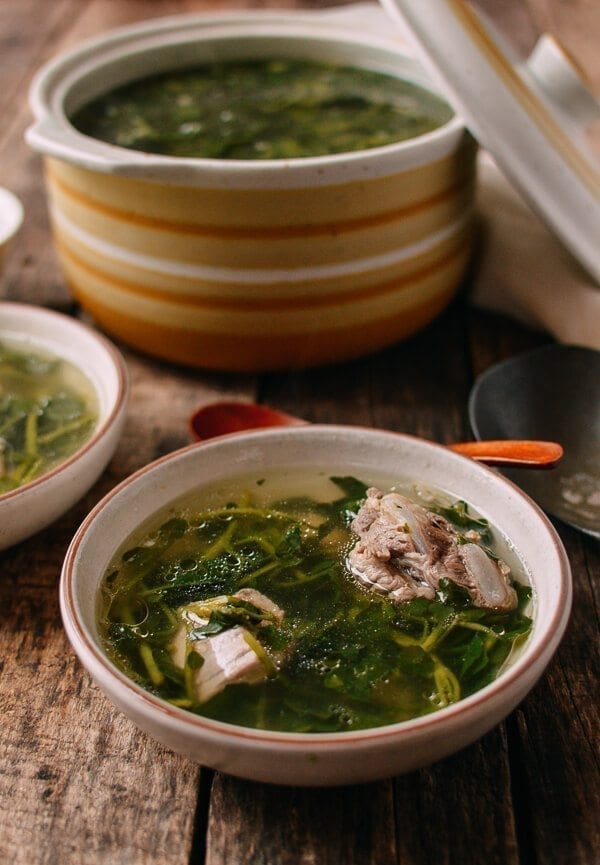
A Note on Ribs
You can use full-size ribs for this recipe, or have the butcher cut them into smaller 1 to 2 inch pieces.
Or, if you have a heavy Chinese cleaver, here’s a quick video demonstrating how to chop the ribs. Don’t try this with a regular chef’s knife. They weren’t meant to chop through bone, and you will probably chip your knife.
As you can see, the cleaver I’m using is very heavy and thick. It was designed for chopping through bones like this.
Position a damp dish towel underneath the cutting board to create an anti-slip surface. It also serves as padding for your countertop, to help absorb the shock of the knife’s motion.
Chinese Watercress Soup with Pork Ribs: Recipe Instructions
First, blanch the ribs. In a large pot, bring 6 cups of water to a boil. Add the pork ribs. Bring the water back up to a simmer, and after 2 minutes, turn off the heat. Drain and wash the ribs clean under running water. This step is important. It keeps your broth clear and clean tasting.
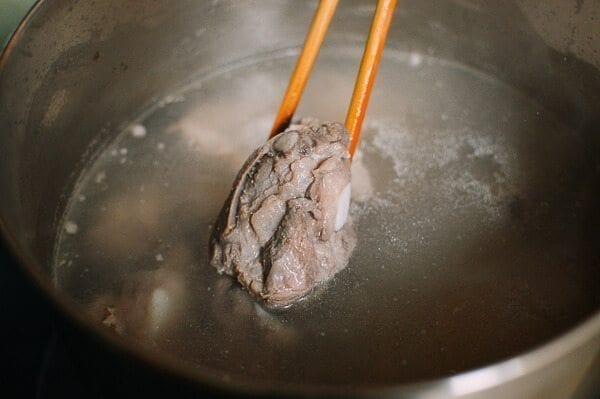
Put the blanched pork ribs, smashed ginger slices, and 8 cups of water in a clean pot. Bring the water to a boil, and immediately turn the heat down to low. Simmer for 90 minutes, covered.
Cantonese soups require low heat for a delicate favor and clear broth. Check on the soup periodically to make sure it is lightly simmering, but not boiling.
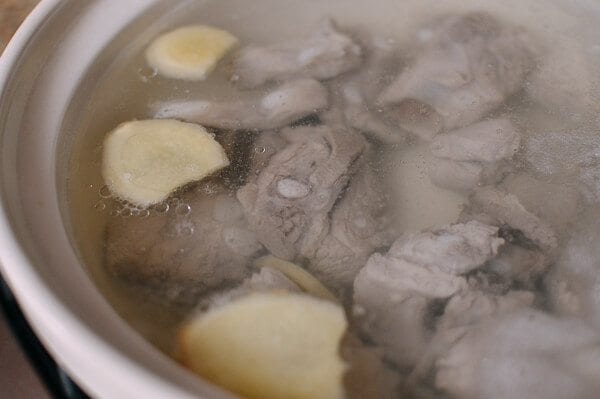
In the meantime, prepare the watercress by trimming off the large tough stems, and washing thoroughly in water 2-3 times.
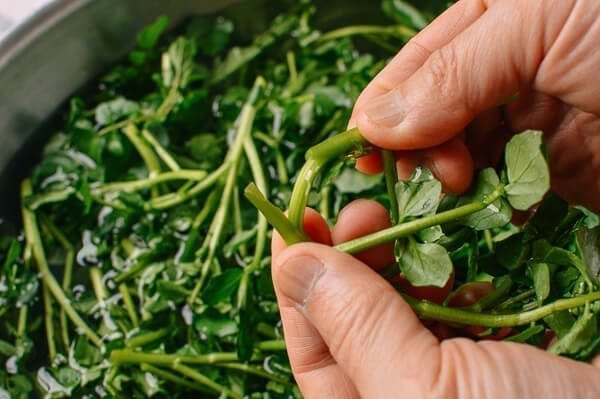
After 90 minutes, stir in 1¼ teaspoons of salt, cover, and simmer for another 30 minutes.
After 30 minutes, give your soup a quick stir, and use a fine-mesh strainer to remove any floating particles. Next, use a ladle to skim off the excess grease that is floating at the top of the soup. Stir in the watercress, cover, and bring up to a simmer. Then lower the heat and cook the soup for 15-30 minutes.
I personally like to simmer the watercress soup for 30 minutes at this stage, so the soup takes on that distinctive watercress flavor. Though keep in mind that the watercress will not be as vibrant. Feel free to adjust the cooking time based on your preference.
Season to taste with salt and white pepper. Serve the soup with a hot bowl of rice and a small dish of light soy sauce as a dipping sauce for the pork. After cooking in the soup for so long, the ribs are melt-in-your-mouth tender and perfect with a little light soy sauce.
You can enjoy this classic Chinese Watercress Soup the way Cantonese families tend to serve it––as the first course of a meal, but it also makes a great, simple one-pot meal for a cold day.

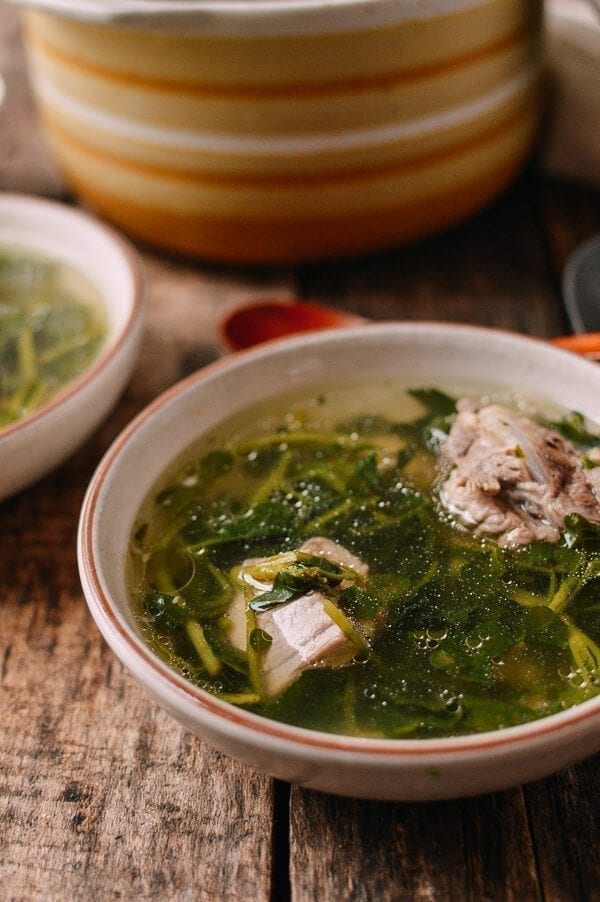
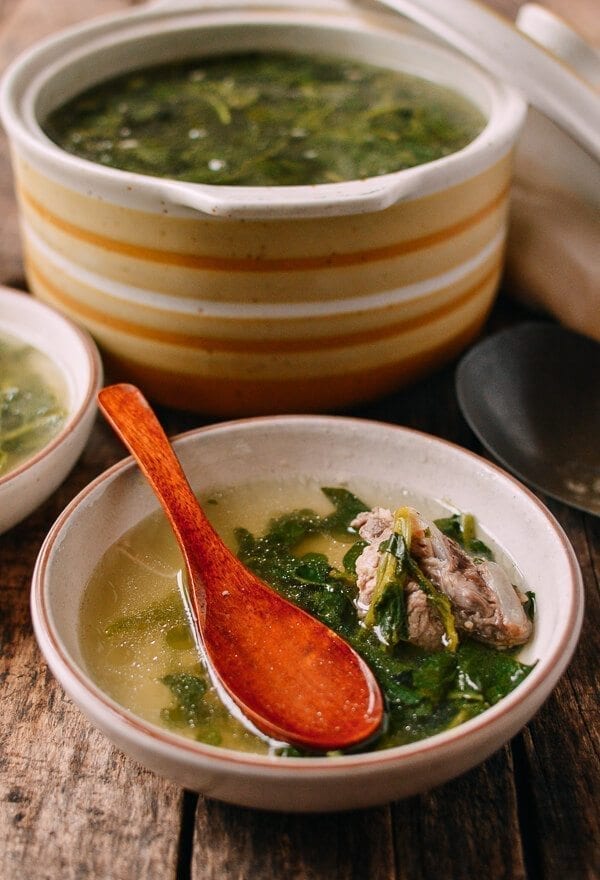
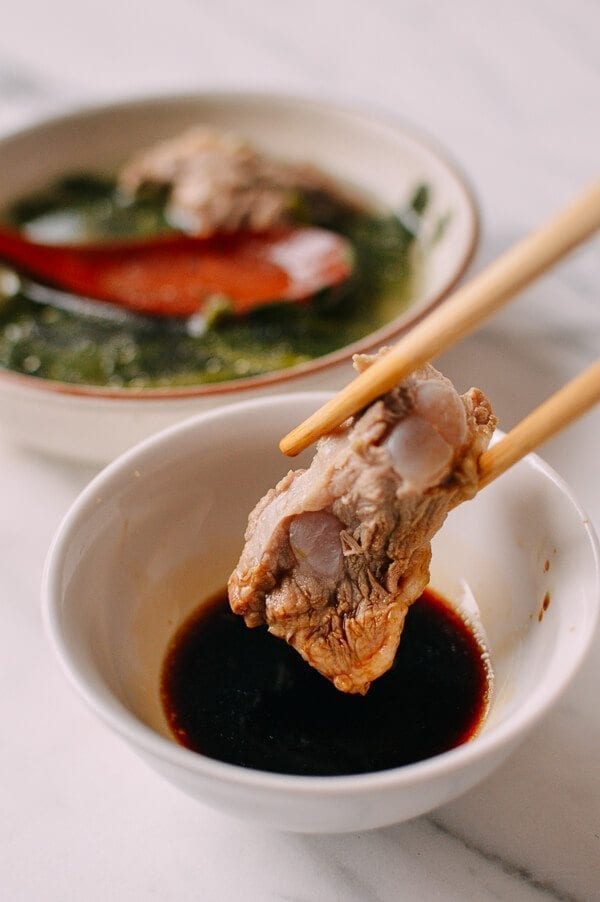
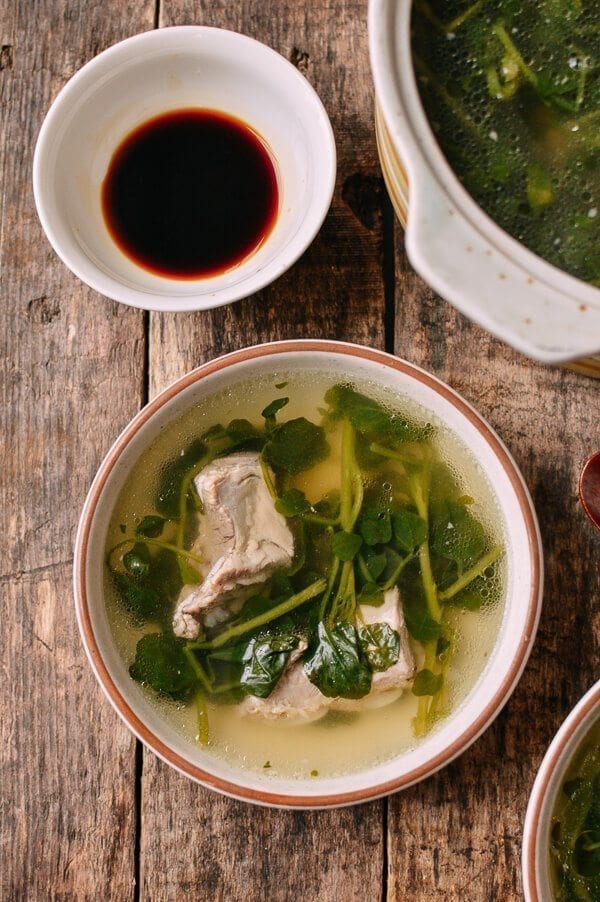
Chinese Watercress Soup with Pork Ribs (Sai Yeung Choy Tong)
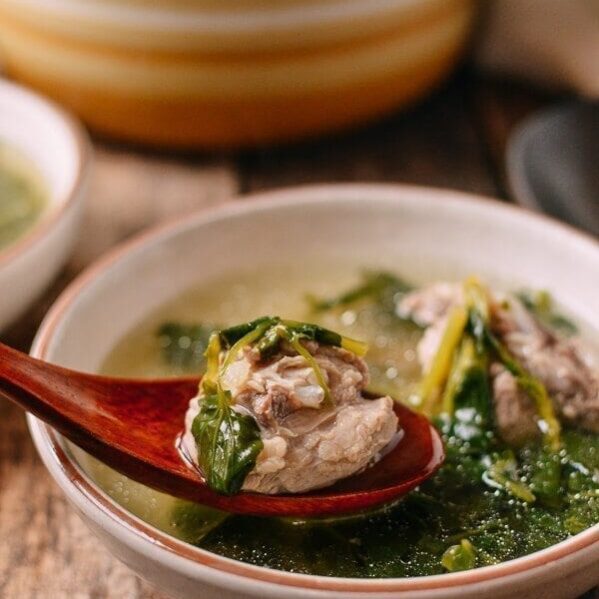
Ingredients
- 1½ pounds pork rib tips or ribs (cut into 2- to 3-inch pieces)
- 5 slices ginger (⅛-inch thick and smashed)
- 8 cups water
- 1 to 2 bunches of watercress (per your personal preference; each bunch is about 8 ounces)
- 1¼ teaspoon sea salt (or to taste)
- White pepper to taste
- Soy sauce to serve
Instructions
- First, blanch the ribs. In a large pot, bring 6 cups of water to a boil. Add the pork ribs. Bring the water back up to a simmer, and after 2 minutes, turn off the heat. Drain and wash the ribs clean under running water. This step is important––it keeps your broth clear and clean tasting.
- Put the blanched pork ribs, smashed ginger slices, and 8 cups of water in a clean pot. Bring the water to a boil, and immediately turn the heat down to low. Simmer for 90 minutes, covered. Cantonese soups require low heat for a delicate favor and clear broth. Check on the soup periodically to make sure it is lightly simmering, but not boiling.
- In the meantime, prepare the watercress by trimming off the large tough stems, and washing thoroughly in water 2-3 times.
- After 90 minutes, stir in 1¼ teaspoons of salt, cover, and simmer for another 30 minutes.
- After 30 minutes, give your soup a quick stir, and use a fine-mesh strainer to remove any floating particles. Next, use a ladle to skim off the excess grease that is floating at the top of the soup. Stir in the watercress, cover, and bring up to a simmer. Then lower the heat and cook the soup for 15-30 minutes. I personally like to simmer the watercress soup for 30 minutes at this stage, so the soup takes on that distinctive watercress flavor. Though keep in mind that the watercress will not be as vibrant. Feel free to adjust the cooking time based on your preference.
- Season to taste with salt and white pepper. Serve the soup with a hot bowl of rice and a small dish of light soy sauce as a dipping sauce for the pork. After cooking in the soup for so long, the ribs are melt-in-your-mouth tender and perfect with a little soy sauce. You can enjoy this classic Chinese Watercress Soup the way Cantonese families tend to serve it––as the first course of a meal, but it also makes a great, simple one-pot meal for a cold day.
